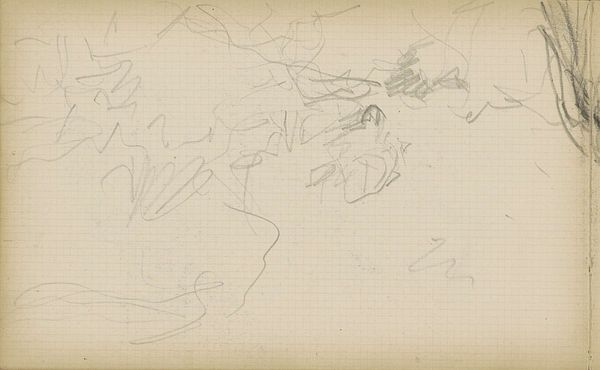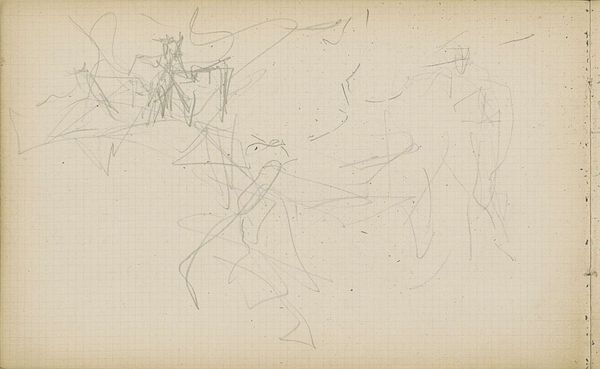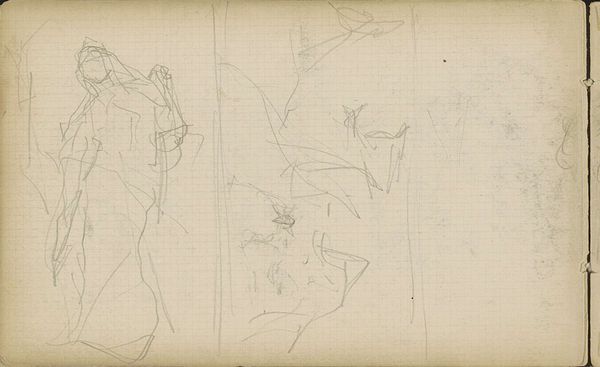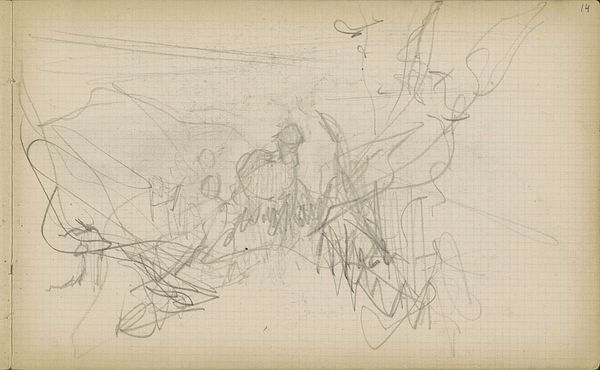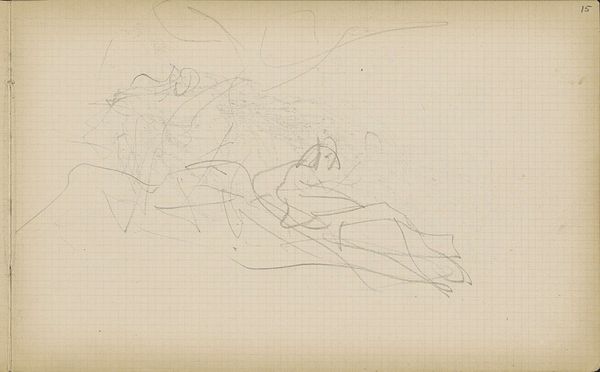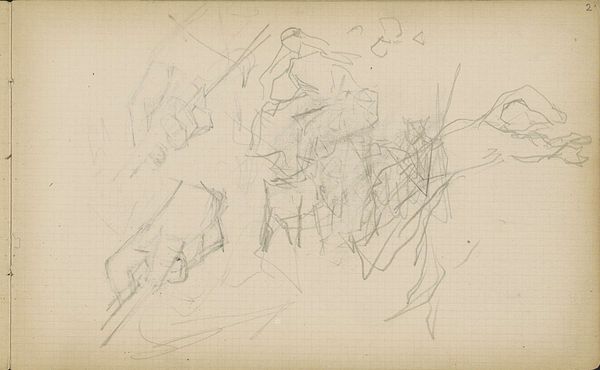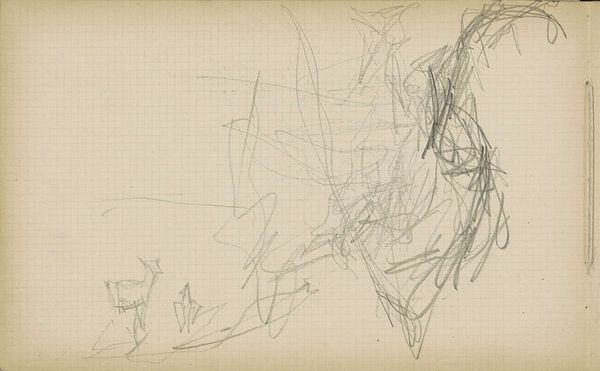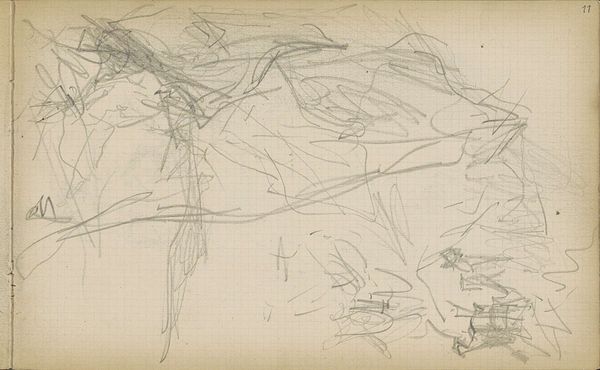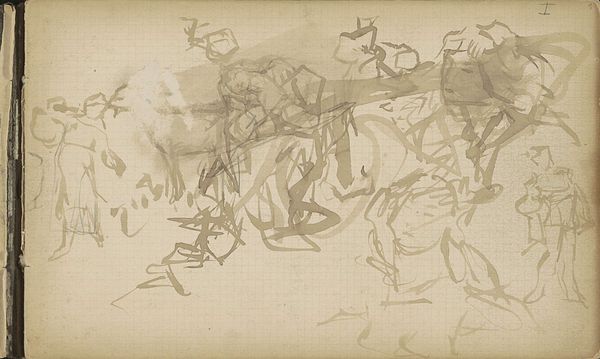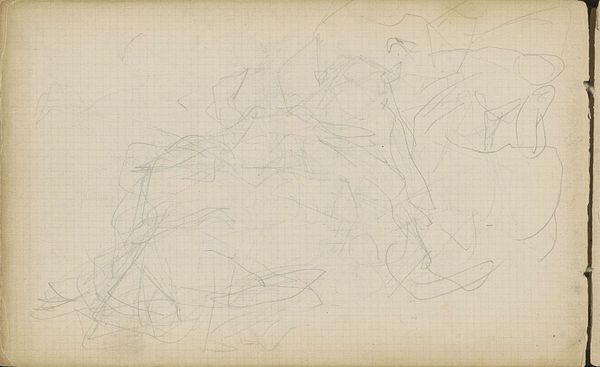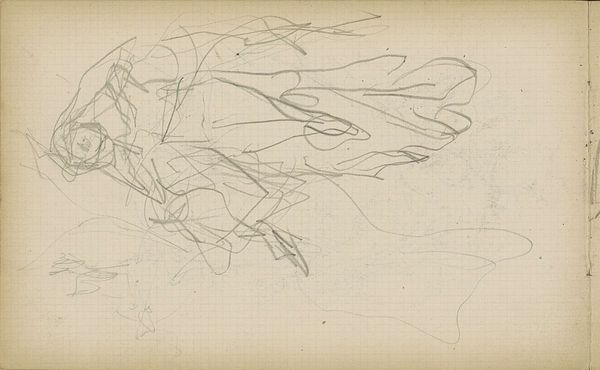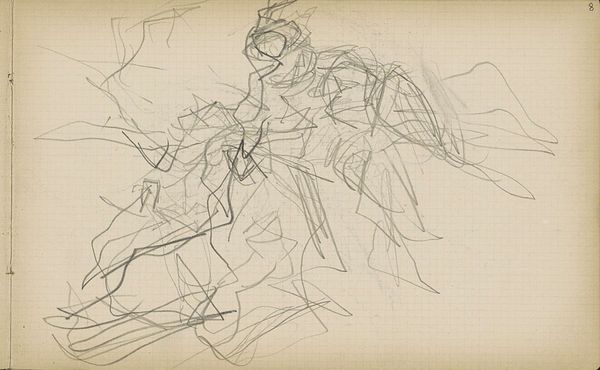
drawing, paper, pencil
#
drawing
#
toned paper
#
light pencil work
#
impressionism
#
pen sketch
#
incomplete sketchy
#
landscape
#
paper
#
personal sketchbook
#
ink drawing experimentation
#
pen-ink sketch
#
pencil
#
abstraction
#
sketchbook drawing
#
sketchbook art
#
initial sketch
Copyright: Rijks Museum: Open Domain
Editor: This is Matthijs Maris' "Landschap met dieren en een figuur," dating from around 1849 to 1917. It's a drawing on paper, employing both pencil and ink. It’s really just a light, preliminary sketch, but I'm struck by its quiet, almost ethereal quality despite being so sparse. What catches your eye when you look at it? Curator: It is interesting, isn't it? Given the period, I see it reflecting a growing disillusionment with the grand narratives and idealized landscapes of earlier art. What was the public role of landscape evolving into, during this period? Editor: I guess there's more focus on personal experience and the everyday? Curator: Precisely. Think about the social changes happening then – industrialization, urbanization. Artists are no longer simply celebrating the natural world as some idyllic escape, but maybe grappling with a changing relationship with it. How might this sketch, in its incompleteness, reflect that? Editor: Perhaps the sketchiness mirrors the fleeting, unstable nature of modern life. The details are indistinct, as if the landscape is dissolving. Is that linked with his aesthetic approach, his use of a limited, understated palette? Curator: Absolutely. The use of pencil and ink suggests a move away from the grand, imposing styles promoted by academies. Maris embraces something more immediate and personal, reflecting shifting artistic and cultural values. In the political landscape of the day, rapid changes impacted how artists sought to present and represent art as well. Editor: That makes sense. It’s almost as if the ‘unfinished’ quality itself becomes a statement. It isn’t just about accurately depicting the landscape, it is the process of seeing and interpreting, in its fragile initial state. I hadn't considered the cultural context so directly! Curator: Exactly, and it allows the viewer to participate, too, filling in the blanks and projecting their own experiences. Considering these things together helps to expand an understanding of how to relate art of the period with history. Editor: That gives me a lot to consider about Maris and impressionism in relation to cultural narratives of the time.
Comments
No comments
Be the first to comment and join the conversation on the ultimate creative platform.
